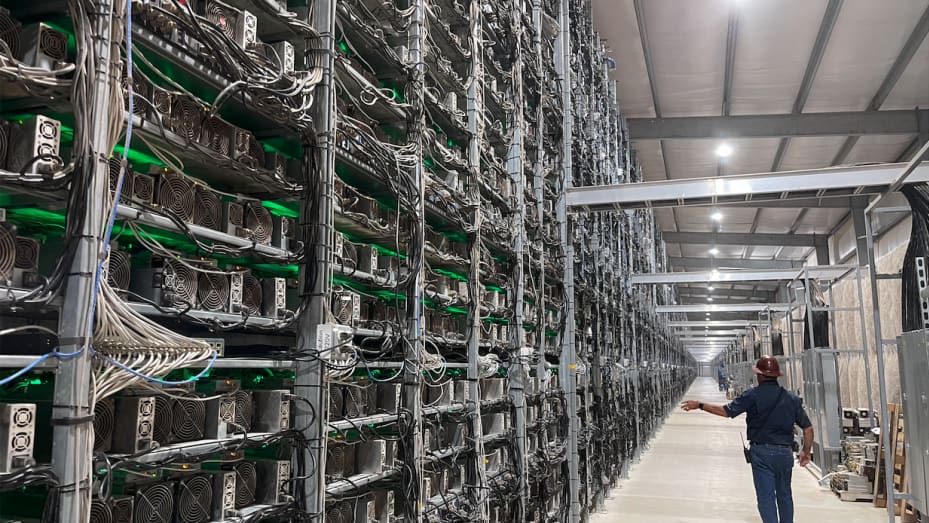Whinstone CEO Chad Harris takes CNBC on a tour of the largest bitcoin mine in North America.
Bitcoin mining has totally recovered from the Chinese crypto crackdown that took more than half the world’s miners offline virtually overnight earlier this year.
The recovery is measured by looking at hashrate, a term used to describe the computing power of all miners in the bitcoin network. China had long been the epicenter of this industry, with past estimates indicating that 65% to 75% of the world’s bitcoin mining happened there. But after Beijing effectively banished the country’s cryptocurrency miners in May, more than 50% of bitcoin’s hashrate dropped off the global network.
As of Friday, data from Blockchain.com shows that the network has completely pared back those loses. The network’s hashrate is up about 113% in five months.
“Bitcoin withstood a nation-state attack of China actually banning mining, and the network shrugged it off,” said Kevin Zhang of digital currency company Foundry, which helped bring over $400 million of mining equipment into North America.
The upward momentum in hashrate may bode well for the price of the world’s most popular cryptocurrency, which is down 30% over the last month. China’s ban was a clear “buy” signal, just as it was with Google and Facebook before it, according to bitcoin mining engineer Brandon Arvanaghi, who now runs Meow, a company that enables corporate treasury participation in crypto markets.
“The large, publicly traded miners were able to raise capital to go make big purchases,” said Mike Colyer, CEO of Foundry.
Core Scientific founder Darin Feinstein agrees there has been a serious growth of mining infrastructure in America. “We’ve noticed a massive uptick in mining operations looking to relocate to North America, mostly in the U.S.,” he said.
